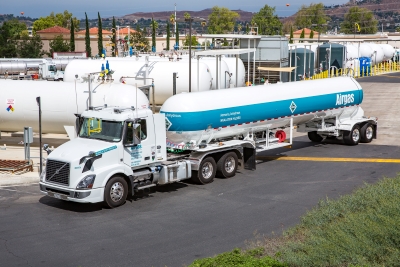Uses for Ammonium Hydroxide
Everything you need to know about Ammonium Hydroxide
Uses for Ammonium Hydroxide
Ammonium Hydroxide (NH4OH) is a colorless liquid chemical solution of ammonia and water with a distinct, bitter, suffocating odor and an acrid taste. Ammonium hydroxide can contain up to 30% pure ammonia.
While it’s stable when stored in normal temperatures and under normal pressures, ammonium hydroxide is still a very volatile substance in nature.
Other names for Ammonium Hydroxide include:
- Ammonia water
- Ammoniacal liquor
- Aqua ammonia
- Aqueous ammonia
- Dilute ammonia
- Ammonia
There are a number of practical uses for ammonium hydroxide, which we’ve included below.
Cleaning Solution
Ammonium hydroxide is most commonly used as a cleaning solution because of its ability to break down household grime and stains from fats and oils, as well as its quick evaporation time which prevents cleaning. It’s often found in solutions meant to clean bathrooms, floors, glass, carpet, metal, upholstery, and more. The typical household ammonia cleaner contains 10% ammonium hydroxide.
As a Water Purifier
Ammonium hydroxide can be used to purify wastewater and as a water softener. It’s often added to public wastewater to help the chlorination process, and it can be used in the production of a disinfectant called monochloramine (which is used to help lower the risk of waterborne infections thanks to its particular ability to purify water in stagnant pipes).
Ammonium hydroxide is also used during the several-week nitrogen cycle when assembling new fish tanks in preparation for new fish — this process is referred to as “fishless cycling.”
Because ammonia is harmful to fish and fish naturally excrete ammonia when they swim, it’s important to develop a healthy bacterial environment in the fish tank before introducing the fish. These bacteria will consume any ammonia in the water and turn it into nitrite, and then turn that nitrite into nitrate. This process is known as the “nitrogen cycle.”
To encourage the nitrogen cycle, the fishless tank is filled with ammonium hydroxide, which helps encourage beneficial bacteria to colonize the tank. Over the course of several weeks, the tank owner continues to add ammonium hydroxide so that the colony of bacteria thrives and expands.
The process speeds up the “nitrogen cycle” in an aquarium which would otherwise require the natural ammonia produced in the bodies of aquarium fish to occur, and would take much longer — and risk the death of new fish.
As a Food Additive
It may surprise you to learn that Ammonium hydroxide is used in foods as well, for purposes like acid control in cheese and chocolate, and as a leavening agent in breads and other bakery items (though it quickly evaporates and isn’t leftover in those bakery items).
Ammonium hydroxide is also often added to dairy cultures when turning milk to cheese in order to reduce acidity and encourage the cheese to grow.
Because ammonium hydroxide can lower the acidity of meats, its often used to combat E. coli and other foodborne pathogens which typically thrive in high-acid environments such as cattle intestines.
Food grade versions of ammonium hydroxide are classified as “generally recognized as safe” (GRAS) by the United States Food and Drug Administration. Its PH control properties make it an effective antimicrobial agent as well.
Straw and Feed Treatment
Dry weather can often lead to winter cattle feed shortages in farm areas with economies that thrive on wheat. Ammonium hydroxide is used to address this problem through a process called “ammoniation” which is used to create “ammoniated straw.”
During years with large droughts and low-quality straw yields, farmers are able to ammoniate their low-quality crops and amplify them with digestibility and protein comparable to medium-quality grass hay.
Ammoniated straw has 8 to15 percent the digestibility of its untreated counterparts, and the process also typically boosts the total digestible nutrients (TDN) to 33 percent in wheat straw and 38 percent in barley straw.
During the ammoniation process, the straw is sealed in an airtight container (typically using plastic sheets) and exposed to ammonium hydroxide.
Depending on the current market rate of feed, and the availability of other materials, ammoniating straw can help farmers survive drought seasons, crop shortages, and regain value from seasons with poor yields.
Furniture Darkening
Ammonium hydroxide has been classically used in a wood finishing process known as “ammonia fuming” meant to stain or darken wood used in furniture. For this process, a solution stronger than standard household ammonium hydroxide (one of around 26 to 30 percent ammonia) is used.
The wood is sealed in a chamber with an ammonium hydroxide solution on the floor, and all the surfaces that are going to be fumed exposed to the air. The amount of time it takes depends on how dark the wood is meant to get — usually between four and 32 hours.
It has advantages over staining because the coloring darkens the grain instead of obscuring it, although it works best on white oak (high tannin content). Other types of wood can be fumed, but the process isn’t as effective. Fumed oak is known as smoked oak.
Used as part of a process called ammonia fuming meant to stain or darken wood, the technique was common during the arts and crafts movement in furniture between 1880 and 1920.
A stronger solution than household ammonium hydroxide is used (around 26 to 30% ammonia).
Fertilizer
While around 90 percent of pure ammonia produced is used as a fertilizer directly or in the fertilizer manufacturing process, aqueous ammonia is only sometimes used.
Airgas Specialty Products Can Answer Your Questions
Airgas Specialty Products is the premier ammonia supplier in North America. We’re the industry leader in product safety and regulation, customer service, and efficient delivery schedules. Every single one of our products is guaranteed to meet or exceed industry standards. Contact us with any questions about ammonium hydroxide or to request a quote.

